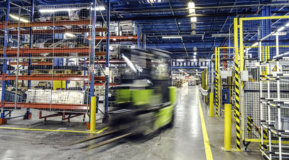
Statistics are boring. Unless you're a baseball fan or Nate Silver, statistics are the kind of mind numbing thing that make you want to lay down and take a long nap. Statistical data isn't going to win any converts by itself. The key is making statistical data tell a story.
Analytics As Words
When we look at the raw data that we can get from a network, whether it be wired or wireless, it is far too easy to dismiss what we're seeing as a jumble of numbers being thrown our way. That's because the raw data we collect from our devices is just a set of numbers. It's a picture of a point in time that has some labels attached to it.
Think about a Wi-Fi heat map, for instance. Those pretty colors are not drawn on the map randomly. Each point corresponds to a specific signal strength modified by noise and other factors in the environment. An access point can't tell you where a wall is in the environment. All it can report is that signal strength from this antenna is degraded in this direction.
The key to making sense of that data is a platform designed to collect and report on that data. Much like a poet or an author will take words and use them to paint pictures and craft narratives, the raw analytics data from the network can be used by the platform to figure out important information and present it in such a way as to help the operators and administrators make important decisions. You can build a visual idea of data over time on a heat map or you can see patterns emerging in data that would have otherwise been invisible.
Painting A Data Picture
A great example of this came at Aruba Atmosphere 2017. Aruba's Rasa platform is a great way to show off the power of analytics and what you can do with them.
In this video, David Morton of the University of Washington shows how Rasa can power active heat maps of users on campus. The challenge for the UW team was to figure out which clients were actually in the building versus which ones were just passing by the front on their way to class. Thanks to the analytic capabilities in Rasa they were able to figure it out. They were also able to install outdoor APs that helped users associate to the network as they were walking up to the building before class.
It's not just about seeing the picture on a map like this though. It's also about seeing the bigger picture in the network and making the best decisions for your users. As outlined in the video, the Aruba Rasa team turned on the machine learning functions in the system that learned what changes needed to be made to help optimize the system. As you can tell from David's response the initial idea was, "No, we're not going to do that." It can be tough to trust the input of a software algorithm over your own instincts and training. However, in the end the UW team was able to see that not only were the Rasa recommendations correct but that they also helped the network in the long run.
The longer term is truly where analytics will shine. People get promoted, move out of the organization, and generally forget why they made changes. Analytics platforms are constantly on the job. They evaluate everything and ensure that the proper changes are made to increase stability or performance. And they can be documented at the time of the change to ensure that the administrator that takes the job long after you are gone understands why a thing was done the way it was.
Analytics and statistics don't have to be boring. Instead of focusing on the minutia of the data, you need to step back and let a platform like Rasa show you the big picture. That kind of visibility helps you better understand how you can use the data to make you network better in the future.



